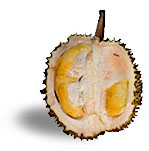Facts About Latin Dancing
Latin dancing is considered one of the liveliest and most enthusiastic type of dancing in the world, both in terms of music and choreography. It plays a major role in Latin American culture, mainly because Latin dancing exists not only as a form of entertainment, but as a metaphor for social unity and identity.
-

"El mariachi" is Copyrighted by Flickr user: Armando Maynez (Armando Maynez) under the Creative Commons Attribution license.
History
- Latin dance combines a blend of various influences that arrived in America over the past two centuries. Among the popular cultures that helped develop Latin dance and music are the African, Spanish and Portuguese---cultures that settled mostly in South America. Africans, who lived in the countries of Cuba, Puerto Rico, Haiti and some parts of Brazil, used their musical influence to tell stories of their own culture, while the Spanish-influenced countries of Mexico and Peru depicted dance as a medium for entertainment.
- Dancing the Latino way is never complete without the music. Latin music is usually lively and backed by an uptempo beat. Traditional Latin musical instruments include the maracas, bongos, marimba and conga drums. These instruments are used in unison and combined with stringed instruments such as guitars and bass guitars along with horns such as trumpets and trombones.
- The movements and steps that make up the choreography of the Salsa, which is a Latin ballroom dance, are made distinct by dancing in accordance with the progression of beats in the music. Weight changes (steps) are made throughout that define the dance, with three weight changes taking place in every four beat measure. The Rhumba, another Latin ballroom dance, is composed of basic syllabus figures. These figures are easily recognized by onlookers and allow them to judge the technical performance of the dancers. Foot movement in the Cha Cha, still another Latin ballroom dance, is led by a male dancer, who takes his female companion through forward basic movements and backward basic movements to a 4/4 beat.
- Latin dances are known for being flamboyant. Latin dancers often wear colorful costumes with lots of frills and ruffles. The Latin dance fashion also requires the use of lightweight fabric that can easily be controlled by body movements, as the costumes add the illusion of grace and flexibility while on the dance floor.
- Latin dancing is considered an essential component of ballroom dancing, and its varieties such as Cha Cha, Salsa and Rhumba have been included in dance sport competitions. Latin dancing has also been included in pop culture, being the subject of the movie "Dirty Dancing" and the celebrity dance show "Dancing with the Stars."





















